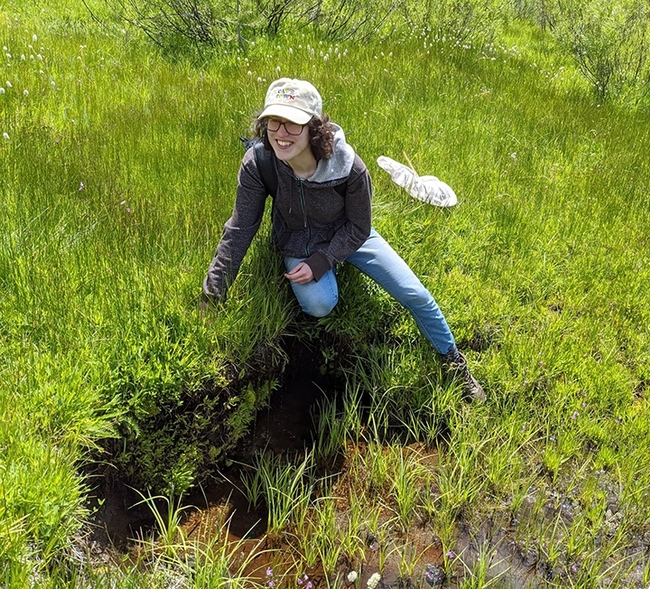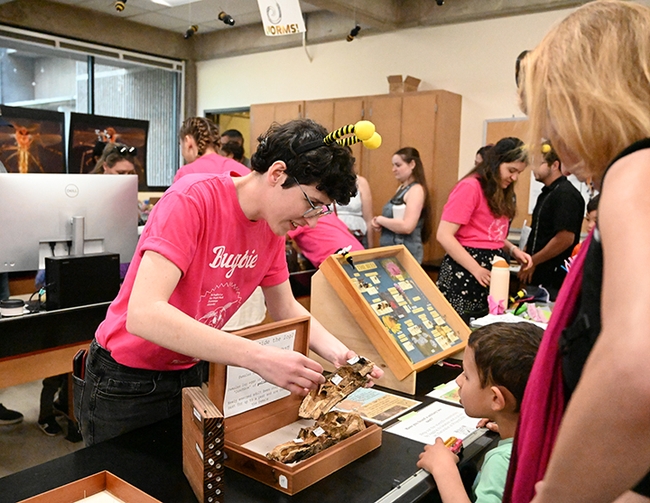- Author: Kathy Keatley Garvey


If you're a member of the Hammock lab, you're family.
So it was no surprise--no surprise at all--when Jean-Pierre Delplanque, Vice Provost and Dean of Graduate Studies announced that Hammock is a recipient of a 2024 Graduate Studies Distinguished Graduate and Postdoctoral Mentoring Award.
“Your dedication to mentoring is truly commendable, and this recognition is well-deserved,” he told Hammock in an email.
The annual award recognizes “the vital role mentoring plays in the academic and professional development of graduate students and postdoctoral scholars at UC Davis.” The professor will receive a certificate and a $1,000 education enrichment award.
Hammock, who holds a joint appointment with the Department of Entomology and Nematology and the UC Davis Comprehensive Center, “is an incredible mentor, legendary scientist, highly supportive colleague, and a great friend,” wrote nominator and former Hammock lab member Guodong Zhang, now an assistant professor in the UC Davis Department of Nutrition. “He richly deserves this prestigious award.”

Zhang described the Hammock lab as a “highly multidisciplinary, with members having scientific backgrounds in nutrition, pharmacology, analytical chemistry, cancer, pain, and environmental toxicology. From these extensive interactions within and outside of the research group, I have learned how to conduct scientific collaborations."
“The 3-year postdoc training in the Hammock lab stands out as one of the most rewarding periods in my research journey,” Zhang related. “In my moments of experimental setbacks, Bruce was a constant source of encouragement, guiding me on extracting valuable insights from negative data. Conversely, when experiments yielded positive results, he offered insightful advice and introduced me to other labs at UC Davis, thus broadening the scope of our research projects. Bruce was most excited about the ‘unexpected data' because of his belief that such anomalies often herald new scientific discoveries. And he always encouraged us to perform experiments to disprove his favorite hypotheses, fostering a positive and nurturing research environment.”
In his letter of nomination, Zhang shared comments by four other Hammock lab alumni: Kin Sing Stephen Lee, now an assistant professor, Department of Chemistry, Michigan State University; Yuxin Wang, lead computational biologist and manager of the Stephen Lindemann lab, Purdue University; Weicang Wang, assistant professor, Department of Food Science, Purdue University, and Susanne Mumby, retired assistant dean for postdoctoral affairs at the University of Texas Southwestern Medical Center. (Read the comments here)
'If Science Is Not Fun, It Shouldn't Be Done!'
We remember when Marlin Rice, a past president of the Entomological Society of America (ESA) chronicled Hammock in a 2020 Legends feature in the ESA's American Entomologist and asked what he looks for in researchers seeking to join his lab. "Curiosity," Hammock replied. "And then there's this: If science is not fun, then it shouldn't be done. And if they enjoy science, then they probably will be successful."
A member of the UC Davis faculty since 1980, Hammock is known for his expertise in chemistry, toxicology, biochemistry, entomology and human health research. His work in enzyme research alone spans more than 50 years. He co-discovered a human enzyme termed Soluble Epoxide Hydrolase (sEH), a key regulatory enzyme involved in the metabolism of fatty acids. The enzyme regulates a new class of natural chemical mediators, which in turn regulates inflammation, blood pressure and pain, and is in human clinical trials to replace opioid analgesics.
As director of the UC Davis Superfund Research Program (funded by the National Institutes of Health's National Institute of Environmental Health Sciences) for nearly four decades, Hammock supported scores of pre- and postdoctoral scholars in interdisciplinary research in five different colleges and graduate groups on campus. campus. He ran a pre- and postdoctoral training grant associated with this program and in addition for 15 years was principal investigator of a NIH training grant in the UC Davis Biotechnology Program.
Hammock is an internationally celebrated scientist. He is a fellow of the National Academy of Inventors, the National Academy of Sciences, the California Academy of Sciences, and ESA. At UC Davis, he received both the Academic Senate's Distinguished Teaching Award and the Faculty Research Lectureship. In 2020, UC Davis Chancellor Gary May awarded him the first-ever Lifetime Achievement Award.
His story, however, begins in Arkansas.
A native of Little Rock, Ark., Bruce received his bachelor's degree in entomology (with minors in zoology and chemistry) magna cum laude from Louisiana State University, Baton Rouge, in 1969. He received his doctorate in entomology-toxicology from UC Berkeley in 1973 with John Casida at UC Berkeley. Hammock served as a public health medical officer with the U.S. Army Academy of Health Science, San Antonio, and as a postdoctoral fellow at the Rockefeller Foundation, Department of Biology, Northwestern University, Evanston, Ill.
In the Army, he served as a medical officer at Fort Sam, Houston, and what he saw--severely burned people in terrible pain--made a lasting impression on him. Today he's deeply involved in his research at UC Davis and the company he founded, EicOsis, in 2011 to alleviate pain in humans and companion animals.
And today, UC Davis distinguished professor Bruce Hammock is a newly announced recipient of a 2024 Graduate Studies Distinguished Graduate and Postdoctoral Mentoring Award. Not only highly commendable, but so well-deserved!


- Author: Kathy Keatley Garvey
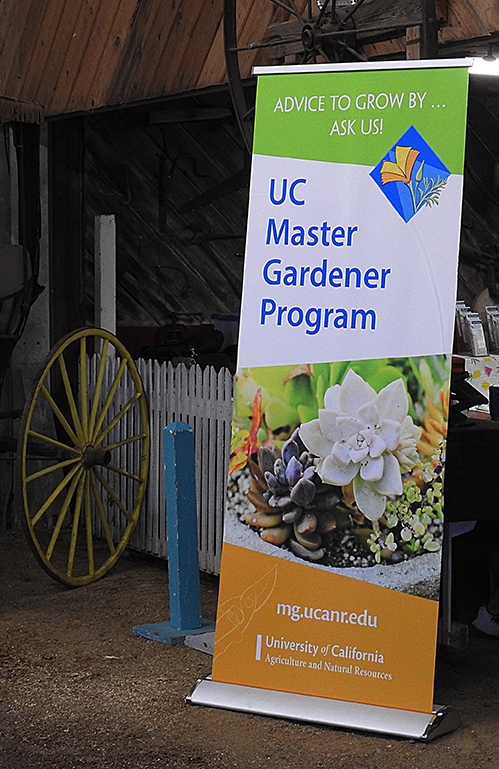
If you visited the horticulture building during the Dixon May Fair (the four-day fair traditionally ends on Mother's Day), you probably saw a team of UC Master Gardeners answering questions from fairgoers and handing out literature.
The UC Master Gardener Program, founded in 1980 and part of the UC Agriculture and Natural Resources (UC ANR), is directed by Missy Gable. The members share a passion for gardening and environmental stewardship, as noted on their website. "UC Master Gardeners are rooted in education and grown in-service! In exchange for training from the University, UC Master Gardeners offer volunteer services and outreach to the general public in more than 1,286 demonstration, community and school gardens across 53 California counties. Last year 6,154 active UC Master Gardener volunteers donated 446,237 hours, and 6.8+ million hours have been donated since the program's inception."
"Our mission is simple: To extend research-based knowledge and information on home horticulture, pest management, and sustainable landscape practices to the residents of California. We stand guided by our core values and strategic initiatives, aiming to inspire, educate, and build communities of eco-conscious gardeners."
The team at the Dixon May Fair mostly fielded questions about vegetable crops--tomatoes proved to be a popular topic. They distributed information from the UC Integrated Pest Management (UC IPM) Program.
If you missed them, the enthusiastic team of Master Gardeners will be back next year. Same fair, same building, same booth...and with some of the same questions asked by fairgoers--"I have a question about planting tomatoes..." You can also contact the UC Solano Master Gardeners via their website. Jennifer Baumbach serves as the program coordinator for both Solano and Yolo counties.
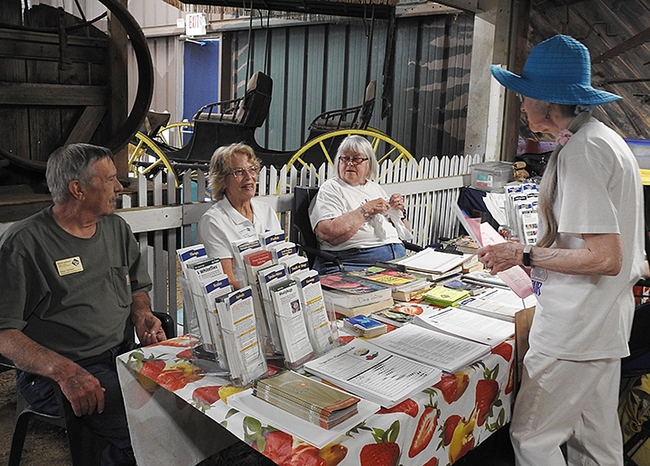
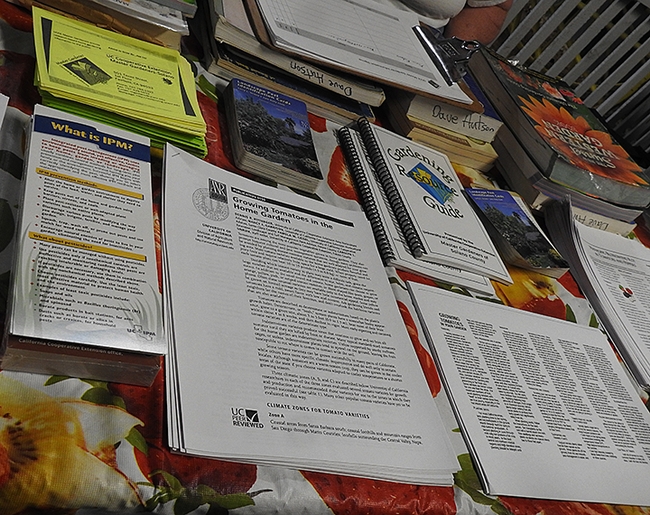
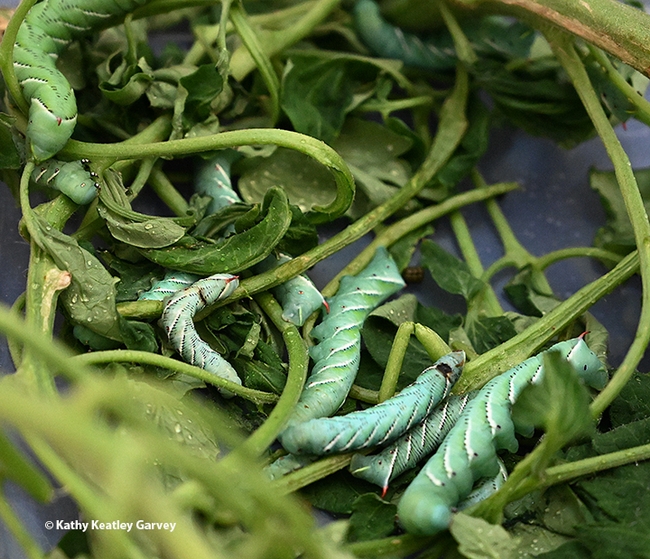
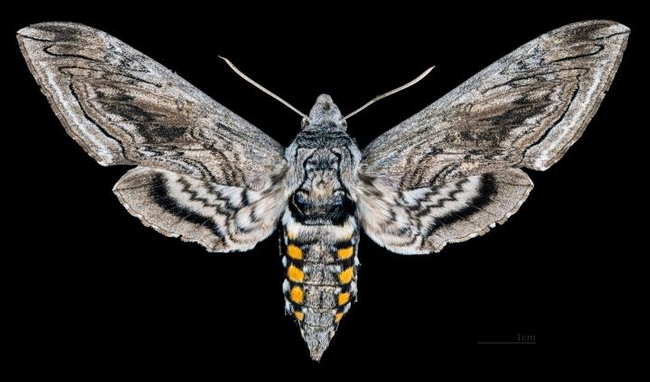
- Author: Kathy Keatley Garvey
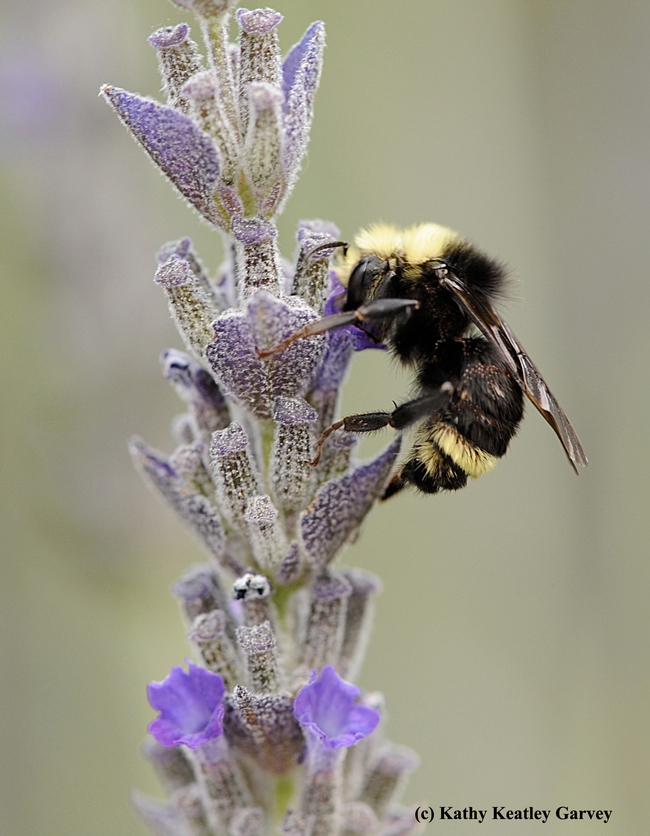
The United Nations designated May 20 as World Bee Day to raise awareness of the importance of pollinators, the threats they face and their contribution to sustainable development, according to its website.
It originated in 2018 when the government of Slovenia proposed that the United Nations declare May 20 as World Bee Day.
Why May 20? That was the day Anton Janša (1734-1773), a pioneer of modern apiculture, was born. "Janša came from a family of beekeepers in Slovenia, where beekeeping is an important agricultural activity with a long-standing tradition," relates Apimondia.
Today, however, let's pay tribute to the bumble bees. The late Robbin Thorp (1933-2019), UC Davis distinguished emeritus professor, UC Davis Department of Entomology and Nematology, used to point out there's only one bumble bee genus--Bombus--and that more than 250 species belong to this genus. California has 27 species of Bombus, according to Thorp in his 1983 published research, "Bumble Bees and Cuckoo Bumble Bees of California," written with colleagues Donald Horning Jr. and Lorry Dunning.
In his retirement, Thorp co-authored two books Bumble Bees of North America: An Identification Guide (Princeton University, 2014) and California Bees and Blooms: A Guide for Gardeners and Naturalists (Heyday, 2014).
Thorp, a member of the UC Davis entomology faculty for 30 years (1964-1994), continued his research, teaching and public service until his death in 2019 at age 85.
Franklin's bumble bee, Bombus franklini--a bee that he monitored for decades until his death in 2019--is now protected as an endangered species under the Endangered Species Act (ESA). It is feared extinct. Thorp, the last known person to see Franklin's bumble bee in its native habitat, spotted it in 2006 near Mt. Ashland. The bee inhabits--or did--a 13,300-square-mile area confined to five counties--Siskiyou and Trinity counties in California; and Jackson, Douglas and Josephine counties in Oregon. Its range may be the smallest range of any bumble bee species in North America, or even the world, he mused.
Today scientists are worried about the declining bumble bee population, a decline attributed to climate change, habitat loss, and pesticides. Bumble bees are especially known for their "buzz pollination" of such plants as tomatoes, peppers and cranberries. They help pollinate crops worth an estimated $3 billion in the United States alone.
"Due to threats including habitat loss, pesticide use and disease, sightings of the bee have declined by 89%, and it's disappeared completely from eight states. The decline of this once-common native bee is alarming and heartbreaking — and a harbinger of massive biodiversity loss across the country."--Center for Biological Diversity.
The dominant bumble bee species in California is the yellow-faced bumble bee, Bombus vosnesenskii. The Western bumble bee, B. occidentalis, used to be quite common. "It's one of four bumble bee species cleared by the state's Third Appellate District Court of Appeal for inclusion on California's endangered species list," according to a UC Riverside news story, published in July 2022.
Access the California Bumble Bee Atlas website to see how you can help. Meanwhile, how many species of bumble bees have you seen and photographed in California? Here are some of them.
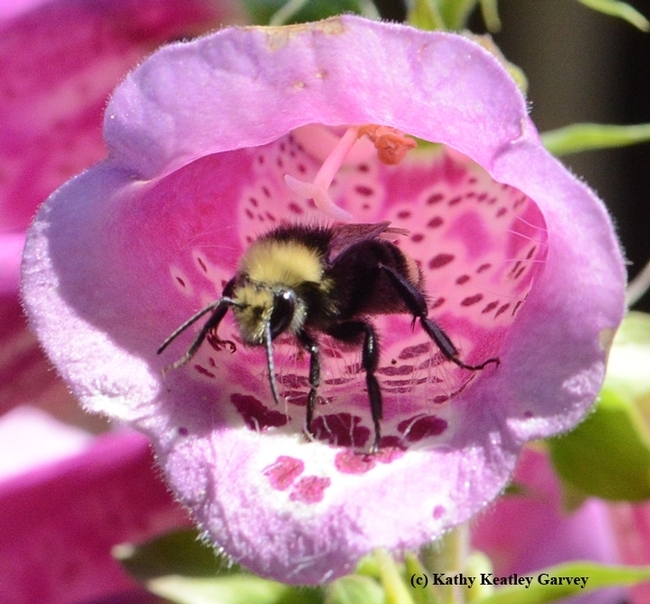
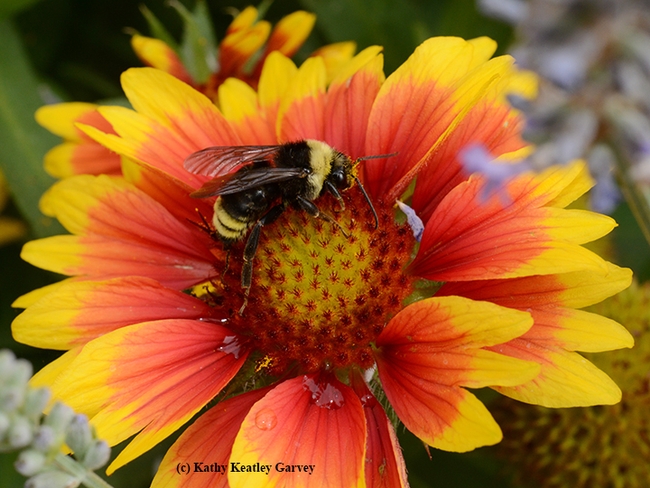
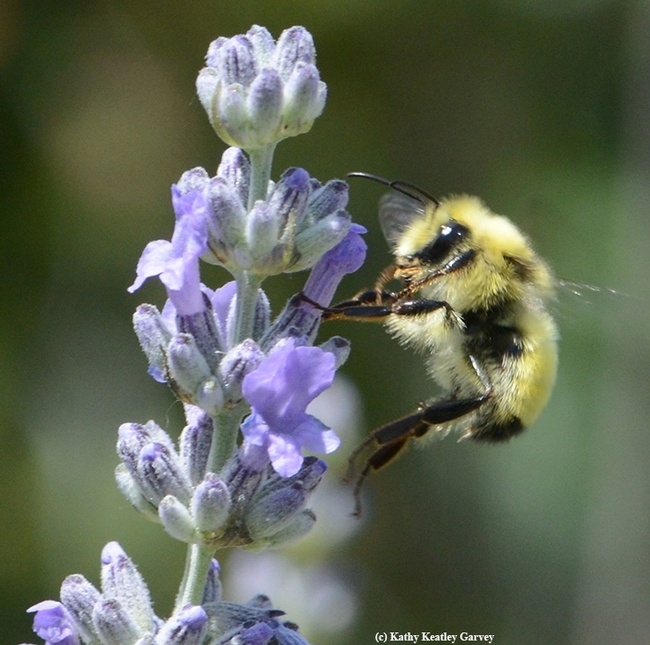
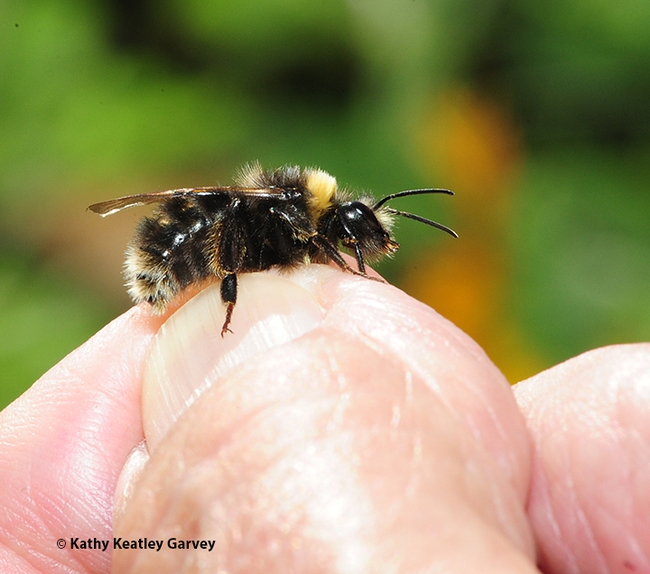
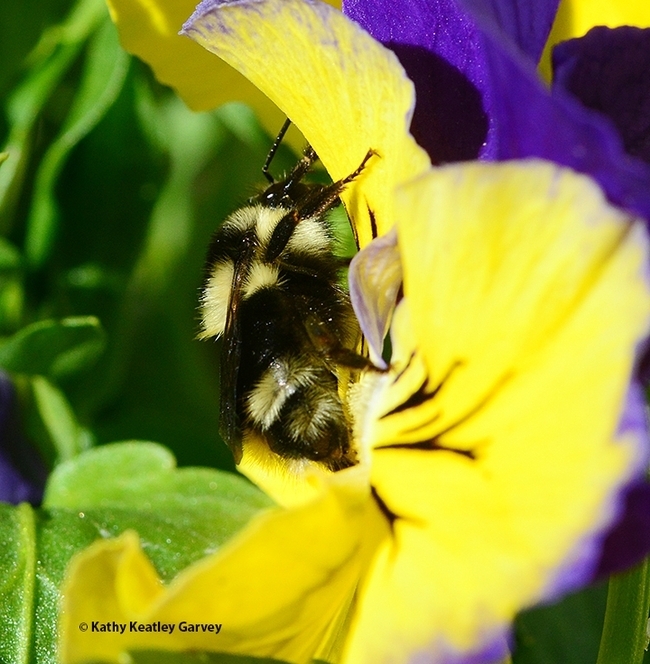
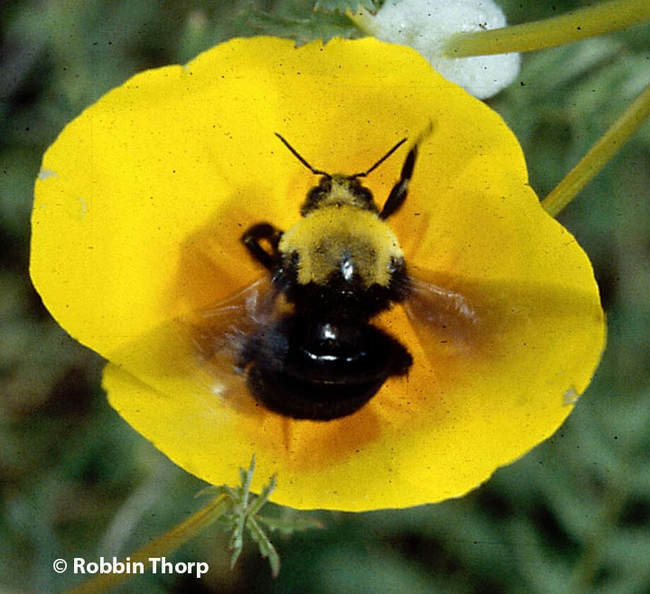
- Author: Kathy Keatley Garvey

Those are some of the activities planned when the Bohart Museum of Entomology hosts an open house on managed bees and wild bees on Sunday, May 19.
The open house, free and family friendly, takes place from 1 to 4 p.m. in Room 1124 of the Academic Surge Building, 455 Crocker Lane, UC Davis campus.
It's perfect timing for "World Bee Day," observed annually on May 20.
At the Sunday open house, UC Davis graduate student Richard Martinez of the lab of apiculturist Elina Lastro Niño, associate professor of Cooperative Extension, UC Davis Department of Entomology and Nematology, will staff the honey bee booth.
Martinez, enrolled in the master's graduate studies entomology program, says that the E.L, Niño Lab booth will display an observation hive and offer honey tasting from a variety of floral sources. He will be sharing recent projects aimed at improving honey bee health via dietary supplements. He also plans to showcase beekeeping suits and hive tools.
Among others scheduled to participate (as of 4 p.m. today) are:
- the laboratory of community ecologist Rachel Vannette, associate professor and chair of the UC Davis Department of Entomology. She will participate with lab members doctoral candidate Lexie Martin, doctoral student Dino Sbardellati, and junior specialist Leta Landucci. "At the Vannette Lab booth, you will be able to look into the life of a bee--both in terms of where they live and how they develop!" said Martin. "A live bumble bee nest and solitary bee nests will be available, so you can peer inside a bee's house! Additionally, there will be live bee larvae to observe under a microscope and interactive displays on the bee life cycle."
- Bohart Museum bee scientists Thomas Zavortink and Sandy Shanks
- Doctoral student Sofía Meléndez Cartagena of the Stacey Combes lab, Department of Neurobiology, Physiology and Behavior. She will focus on local bee diversity.
- Chancellor's Fellow Santiago Ramirez, associate professor, Department of Evolution and Ecology, who studies orchid bees
- Doctoral student Peter Coggan of the Ramirez lab. He studies the neurological and genetic basis of orchid bee courtship behavior and evolution.
The Bohart Museum houses a global collection of eight million insects, plus a live petting zoo, and a gift shop. Professor Jason Bond directs the museum as of Feb. 1, succeeding Kimsey, who served 34 years. Bond is the Evert and Marion Schlinger Endowed Chair of the Department of Entomology and Nematology, and the associate dean, UC Davis College of Agricultural and Environmental Sciences. He also serves as president-elect of the American Arachnological Society.
For more information, access the website at https://bohart.ucdavis.edu or contact bmuseum@ucdavis.edu.
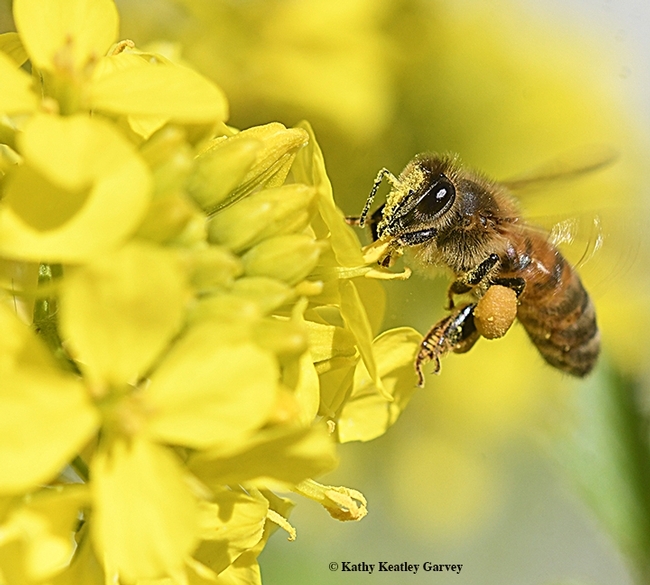
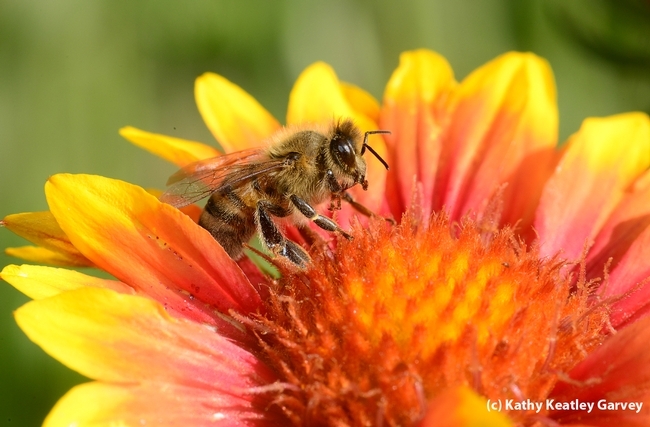
- Author: Kathy Keatley Garvey
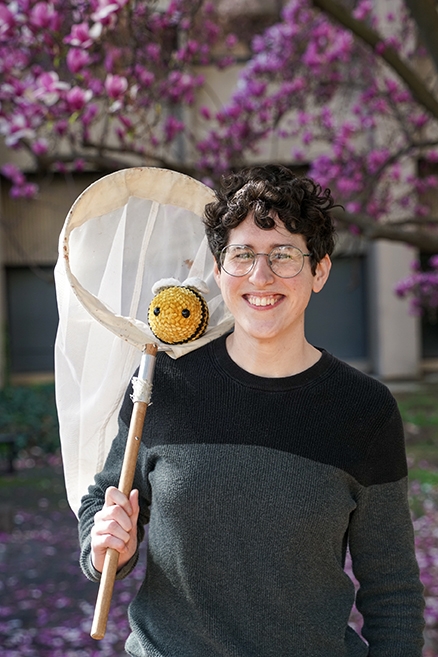
Rukowski, who studies with community ecologists Rachel Vannette, associate professor and vice chair of the UC Davis Department of Entomology and Nematology, and distinguished professor Rick Karban, will present her exit seminar on "Identity and Functions of Symbiotic Fungi Associated with Social Bees" on Monday, May 20.
Her hour-long seminar starts at 4:10 p.m. in Room 122 of Briggs Hall. It also will be on Zoom. The Zoom link:
https://ucdavis.zoom.us/j/9 5882849672.
"Social bees interact with diverse microbial communities that reside in flowers, in their nests, and within their guts," Rutkowski says in her abstract. "Fungi are common inhabitants of these environments, but despite their prevalence, little is known about their interactions with bees and their impacts on bee health. In my thesis, I identified common fungal associates of social bees and investigated their effects on bumble bee health, specifically focusing on their roles in bee response to fungicide, bee nutrition, and protection from pathogens."
"I identified several yeast groups frequently associated with social bees, including the genera Starmerella and Zygosaccharomyces," she relates. "Addition of these yeasts to bee diets improved survival and reproduction, and for one species, helped bees recover from negative effects of fungicide exposure. However, a follow-up study determined that these benefits to bee health are inconsistent and unrelated to bee nutrition. Rather, benefits of these yeasts instead may be mediated through pathogen suppression, as Starmerella yeasts are able to inhibit the growth of multiple fungal pathogens of bees. These results highlight the important impacts of these currently understudied microbes on bumble bee health, with implications for conservation of these pollinators."
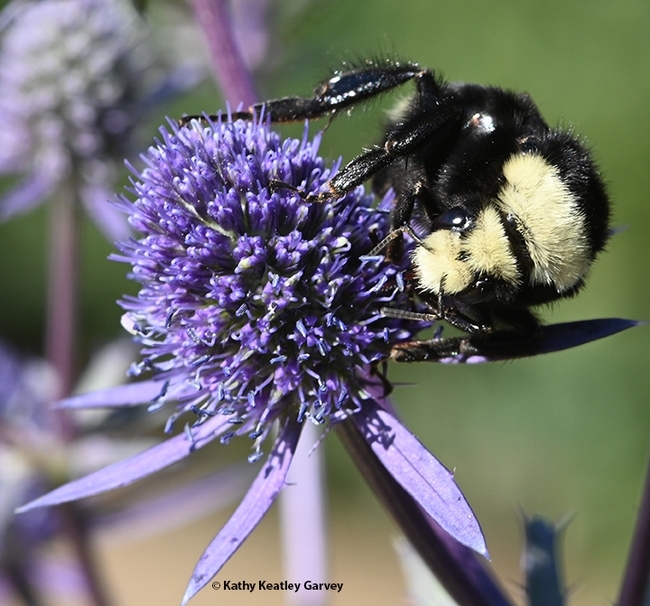
In her 2021 ESA presentation, she drew attention to fungicide applications that are linked to declining bumble bee populations. She wrote in her abstract: "Native bees including bumble bees are important pollinators but face threats from multiple sources, including agrochemical application. Declining bumble bee populations have been linked to fungicide application, which could directly affect the fungi often found in the stored food and GI tract of healthy bumble bees. Here, we test the hypothesis that fungicides impact bee health by disrupting bumble bee -fungi interactions. Using two species, Bombus vosnesenskii and B. impatiens, we test the interactive effect of the fungicide propiconazole and fungal supplementation on the survival, reproduction, and microbiome composition of microcolonies (queenless colonies). We found that both bee species benefitted from fungi, but were differentially affected by fungicides. In B. vosnesenskii, fungicide exposure decreased survival while fungal supplementation mitigated fungicide effects. For B. impatiens, fungicide application had no effect, but fungal supplementation improved survival and offspring production. Fungicides altered fungal microbiome composition in both species, and reduced fungal abundance in B. vosnesenskii microcolonies, but not in B. impatiens, where instead fungal addition actually decreased fungal abundance. Our results highlight species-specific differences in both response to fungicides and the nature of fungal associations with bees, and caution the use of results obtained using one species to predict the responses of other species. These results suggest that fungicides can alter bee- fungi interactions with consequences for bee survival and reproduction, and suggest that exploring the mechanisms of such interactions, including interactions within bee-associated fungal communities, may offer insights into bumble bee biology and bumble bee conservation strategies."
Her many activities include:
- A 2023 graduate of The Bee Course, a 10-day workshop on bee collection and identification at the Southwestern Research Station in Portal, AZ.
- Co-chair of the department's entomological activities, 2022 UC Davis Picnic Day, with forensic entomologist Robert Kimsey.
- As a member of the UC Davis graduate student group, Equity in Science, Technology, Engineering, Math, and Entrepreneurship (ESTEME), she helped plan activities and lessons for middle school students in the Davis area.
- Former secretary and vice president of the UC Davis Entomology Graduate Student Association.
- Mentored prospective graduate students from groups underrepresented in STEM through a month-long program, and provided application advice and feedback on application materials.
Rutkowski holds a bachelor of science degree from Cornell University in entomology and biological sciences, with a concentration in ecology and evolutionary biology. She graduated in May 2018 summa cum laude with distinction in research.
At Cornell, Rutkowski did independent research with Professor Jennifer Thaler, carrying out an independent honor's thesis research project on ecological interactions between insect herbivores, plants, and arbuscular mycorrhizal fungi. Rutkowski also worked with Thaler on numerous other projects, studying interactions between potato plants, Colorado potato beetles, and their predators, as well as projects studying the interactions between arbuscular mycorrhizal fungi, tomato plants, and insect herbivores. She also worked with Professor Richard Lindroth at the University of Wisconsin, Madison, investigating how genotype and environmental conditions interact to affect the growth, defense and insect community of aspen trees.
Rutkowsk is the lead author or co-author in a number of publications:
- Rutkowski, D., Weston, M., Vannette, R.L. (2023) Bees just wanna have fungi: A review of bee associations with non-pathogenic fungi. FEMS Microbiology Ecology 99(8) https://doi.org/10.1093/femsec/fiad077
- Karban, R., Rutkowski, D., Murray, N. (2023) Flowers that self?shade reduce heat stress and pollen limitation. American Journal of Botany 110(2) https://doi.org/10.1002/ajb2.16109
- Pepi, A., Pan, V., Rutkowski, D., Mase, V., Karban, R. (2022) Influence of delayed density and ultraviolet radiation on caterpillar baculovirus infection and mortality. Journal of Animal Ecology 91(11):2192-2202 https://doi.org/10.1111/1365-2656.13803
- Rutkowski, D., Litsey, E., Maalouf, I, Vannette, R.L. (2022) Bee-associated fungi mediate effects of fungicides on bumble bees. Ecological Entomology 47(3):411-422 https://doi.org/10.1111/een.13126
- Mola, J.M., Stuligross, C., Page, M.L., Rutkowski, D., Williams, N.M. Impact of “non-lethal” tarsal clipping on bumble bees (Bombus vosnesenskii) may depend on queen stage and worker size. Journal of Insect Conservation 25, 195–201 (2021). https://doi.org/10.1007/s10841-021-00297-9
The UC Davis Department of Entomology and Nematology seminars are coordinated Brian Johnson, associate professor. For any technical issues with Zoom, contact him at brnjohnson@ucdavis.edu. The full list of spring seminars is here.
